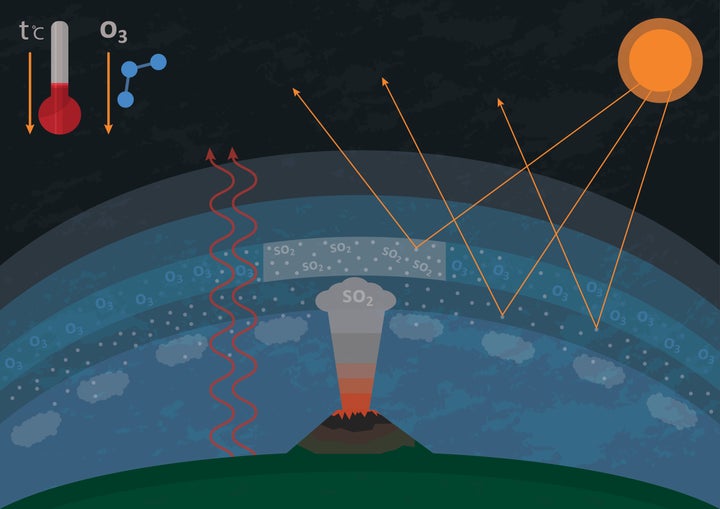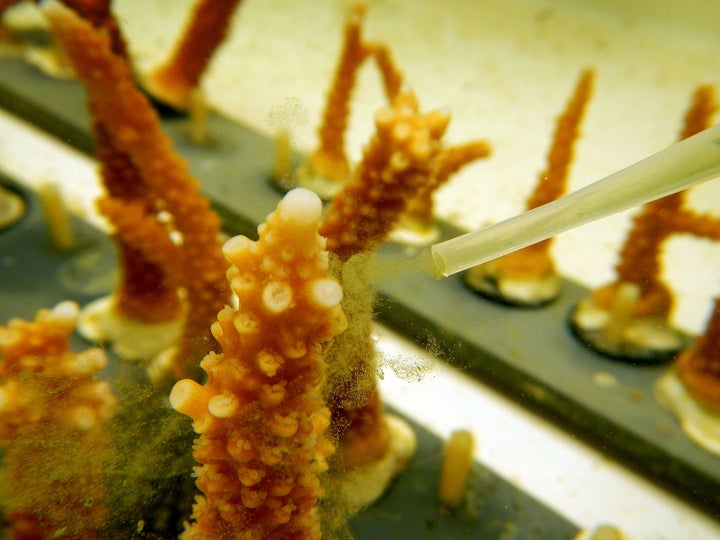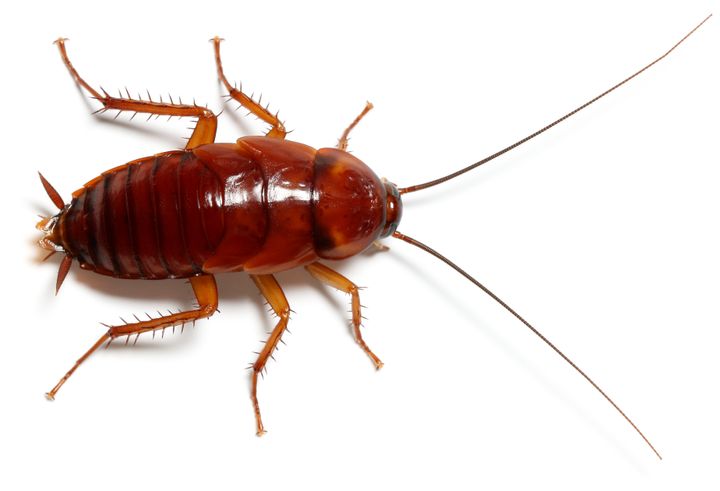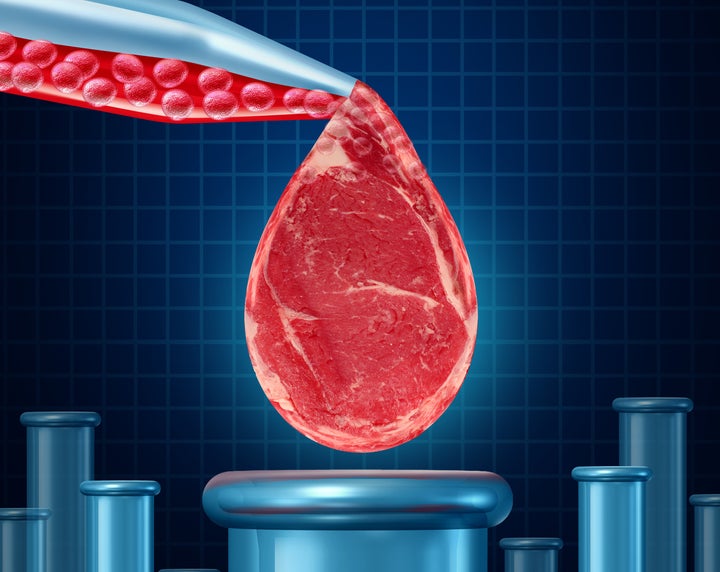A slew of terrifying headlines have defined 2018. We have 12 years to drastically scale back emissions before catastrophic climate change becomes inevitable. The Earth looks to be hurtling toward a tipping point at which global systems will be pushed into a “hothouse” state, leading to temperature rises of up to 5 degrees and sea level rises of up to 197 feet. We are killing off animal and insect species at almost unprecedented speed.
The year has also seen a series of radical ideas aimed at providing humanity with a way out of the mess we’re in. Some are new, some are the development of much older ideas, some are controversial.
None is going to single-handedly save the world, not even close. For that we need fundamental change to the way we run our economies and societies. But the emergence of these radical, innovative, and sometimes terrifying ideas shows the increasing acceptance of the huge challenges we face. Here we look at five of them.
Turning Down The Sun

In the spring of 2019, a group of Harvard University scientists will send balloons up into the atmosphere to seed calcium carbonate particles into the air. The aim: to see if they can turn down the temperature of the Earth.
It will be the first real world test of a decades-old technology called solar geoengineering, previously confined to lab experiments. The basic idea is to seed the atmosphere with gases to block some of the sun’s rays – by reflecting them back into space – and so lowering the planet’s temperature. The process mimics the aftereffects of big volcanic explosions, where gasses released have caused global cooling.

Geoengineering is one of the more extreme weapons in the arsenal of ideas for reducing the effects of climate change. And it’s an idea with support among a cohort of people not exactly known for taking climate change seriously. But as we face down the barrel of catastrophic temperature rises — we are on course to see rises of 4 C (7 F), according to an August government environmental paper — the technology’s appeal is obvious.
However, it’s untested, so no one really knows how well it might work or the potential consequences it could unleash once started. There are concerns it could disrupt rain patterns or deprive crops of sunlight in some regions. Plus, if we embark on geoengineering and then had to suddenly stop, temperatures could rise rapidly, pushing species to extinction and accelerating climate change, according to a January 2018 study.
Still, as global temperatures continue to rise, some scientists say we cannot afford to write off the technology. “Not talking about geoengineering is the greatest mistake we can make right now,” David Fahey, an atmospheric scientist at the National Oceanic and Atmospheric Administration, told Nature.
Using Electricity To Regrow Coral Reefs

Warming seas are bad news for coral. Australia’s Great Barrier Reef, considered one of the natural wonders of the world, has been ravaged by temperature increases. In 2016, and again in 2017, it was hit by mass bleaching events essentially cooking the reef, killing large swaths of this colorful underwater world.
The death of coral around the world is devastating for sea life, which in turn harms the people who rely on reef fish to feed themselves and their families. Plus, reefs are a huge generator of tourism dollars for communities.
But scientists are experimenting with regrowing coral using electricity. They are placing steel frames on parts of the reef badly damaged in the bleaching and then electrifying them, causing the growth of mineral deposits which help the coral grow more quickly. This method is being trialed in Indonesia and in parts of the Great Barrier Reef which were damaged in the bleaching events.
Injured coral moved to these structures grow up to 20 times faster and have a 50 times better chance of survival, according to a BBC report.
The drawback? It’s relatively expensive and the teams need to work out how to use clean energy rather than relying on fossil fuels. Plus, even if this method allows for faster coral growth, whether it can ever keep up with the rate of destruction is another question. Coral can take hundreds and hundreds of years to grow.
The Plastic-Eating Mutant Enzyme
In April, scientists announced they had accidentally discovered a mutant enzyme that could “eat” plastic. It breaks down the polymers in P.E.T., a very widely-used type of plastic commonly found in single-use soft drinks bottles.
Unlike a lot of other recycling processes which degrade plastic, the material left behind after the enzyme has done its work can be recycled into high-quality, clear plastic again.
The story gained a huge amount of traction as it seems to offer a new solution to our plastic waste crisis. More than 16,000 plastic bottles are bought around the world every second, one million a minute. And most of these end up in landfill or dumped in the environment, where they take up to 400 years to biodegrade.
This accumulated plastic waste has a heavy toll on our environment, choking rivers and oceans, filling the stomachs of fish, birds and other animals, and even ending up in our poop. Of the plastic waste produced between 1950 and 2015, only 9 percent was recycled.
Of course, the enzyme does not address the problem at its root: the reality that our consumption is out of control. Louise Edge, senior oceans campaigner at Greenpeace, told HuffPost, “What we really need are system changes … An enzyme alone can’t clean up the complex and widespread legacy of plastic pollution that we have already created.”
But the scientists are buoyant about the possibilities and searching for other enzymes that could breakdown further types of plastics. “This unanticipated discovery suggests that there is room to further improve these enzymes, moving us closer to a recycling solution for the ever-growing mountain of discarded plastics,” said John McGeehan, a biology professor at the University of Portsmouth and one of the lead scientists on the research.
Waste-Munching Cockroaches

Few creatures inspire as much squeamishness as cockroaches, synonymous with dirty conditions and disease. But in China they are experiencing something of a renaissance as a potential solution to the mountains of food waste produced each year.
Already farmed for their supposed medicinal properties, to help with stomach aches, colds and other ailments, they are now being used as living waste disposal units. At a facility in Jinan in the Shandong Province of eastern China, run by the agricultural-tech company Shandong Qiaobin, a billion cockroaches are fed 50 tons of food waste a day. The food arrives before dawn, reports Reuters, and is fed through pipes into the cockroaches’ cells.
The system is a circular one. The cockroach poop is used to make fertilizer, and when the cockroaches die they are processed into animal feed. “It’s like turning trash into resources,” Shandong Qiaobin chairwoman Li Hongyi told Reuters.
The company aims to build three more plants by the end of the year to process a third of the kitchen waste in the the city of Jinan, where 7 million people live.
The catch? If the cockroaches were to escape the facility, they could cause devastation to the local environment. In 2013, more than 1 million escaped from a farm after someone vandalized the greenhouse they were in.
Lab-Grown Meat

Our diets have been under the microscope this year as study after study pointed to the desperate need for people in richer countries to dramatically cut their consumption of meat to avoid the world’s slide into dangerous climate change.
Now our diets could literally come from under the microscope as the we head toward the first commercially available lab-grown meats.
Agriculture has a huge environmental impact, taking up vast tracts of land and huge amounts of resources like water. Then there’s the emissions — meat and dairy are responsible for 60 percent of the emissions created by agriculture. But people still love to eat meat.
A group of food startups think they have the answer: Meat grown without the need to raise and slaughter an animal. Known, among other things, as cultured meat, lab-grown meat and slaughter-free meat, it’s produced by feeding animal cells with nutrients, sugar and growth factors. Just, a San-Francisco based company, says it will release lab-grown chicken imminently and another company, Memphis Meat, says its chicken strips will be ready in 2019.
It’s an appealing idea for meat eaters but it’s early-stage and expensive. Currently, a lab-grown burger would set you back around $600. Of course, this cost is often an issue for early-stage technology and companies say they are confident prices can be reduced dramatically. We also don’t have enough information about the environmental impact of producing lab-grown meat and, importantly, whether people will be able to get over the “ick” factor and actually eat it.
For more content and to be part of the ‘This New World’ community, follow our Facebook page.
HuffPost’s ‘This New World’ series is funded by Partners for a New Economy and the Kendeda Fund. All content is editorially independent, with no influence or input from the foundations. If you have an idea or tip for the editorial series, send an email to thisnewworld@huffpost.com
